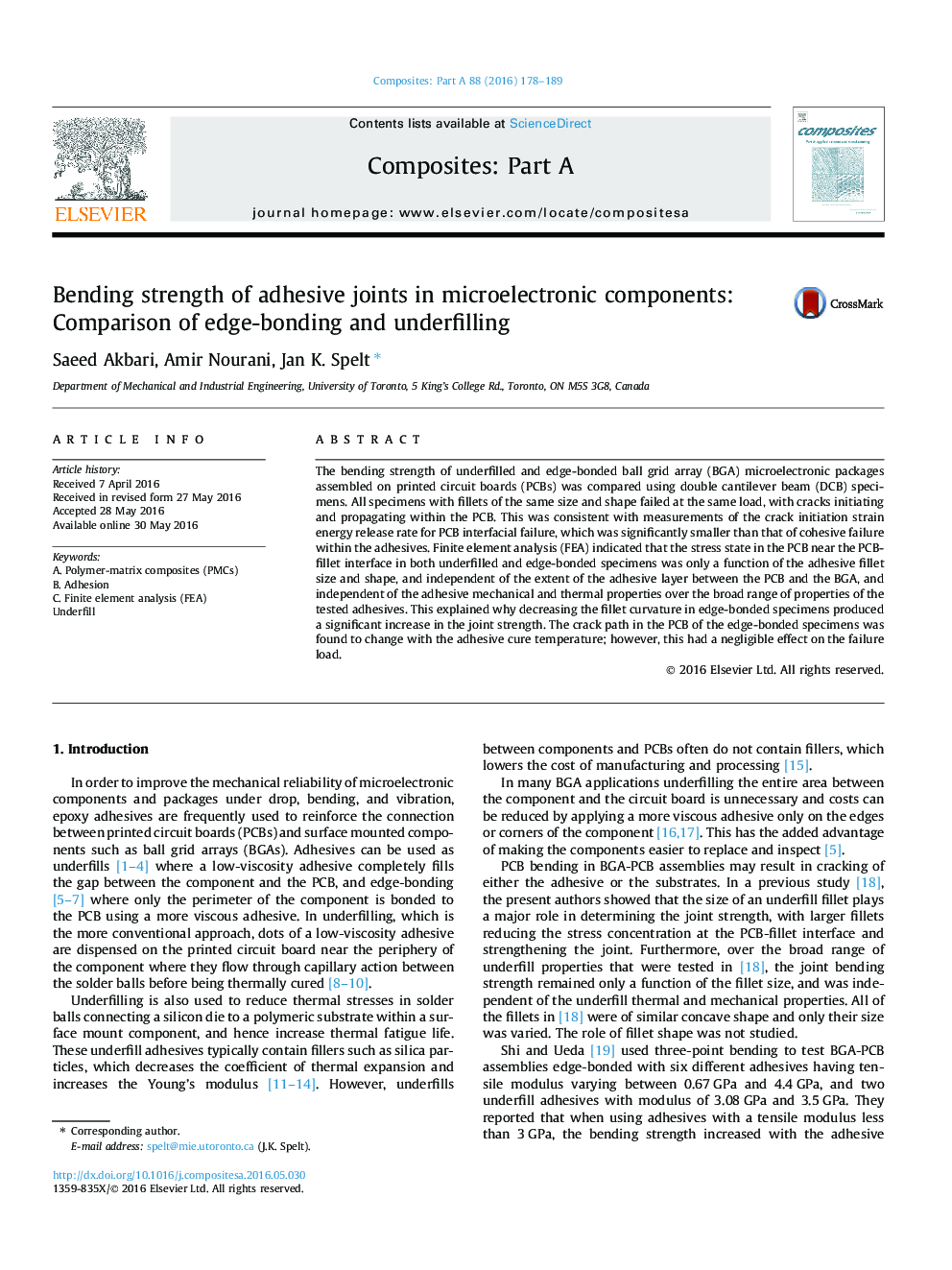| Article ID | Journal | Published Year | Pages | File Type |
|---|---|---|---|---|
| 7890557 | Composites Part A: Applied Science and Manufacturing | 2016 | 12 Pages |
Abstract
The bending strength of underfilled and edge-bonded ball grid array (BGA) microelectronic packages assembled on printed circuit boards (PCBs) was compared using double cantilever beam (DCB) specimens. All specimens with fillets of the same size and shape failed at the same load, with cracks initiating and propagating within the PCB. This was consistent with measurements of the crack initiation strain energy release rate for PCB interfacial failure, which was significantly smaller than that of cohesive failure within the adhesives. Finite element analysis (FEA) indicated that the stress state in the PCB near the PCB-fillet interface in both underfilled and edge-bonded specimens was only a function of the adhesive fillet size and shape, and independent of the extent of the adhesive layer between the PCB and the BGA, and independent of the adhesive mechanical and thermal properties over the broad range of properties of the tested adhesives. This explained why decreasing the fillet curvature in edge-bonded specimens produced a significant increase in the joint strength. The crack path in the PCB of the edge-bonded specimens was found to change with the adhesive cure temperature; however, this had a negligible effect on the failure load.
Related Topics
Physical Sciences and Engineering
Materials Science
Ceramics and Composites
Authors
Saeed Akbari, Amir Nourani, Jan K. Spelt,
